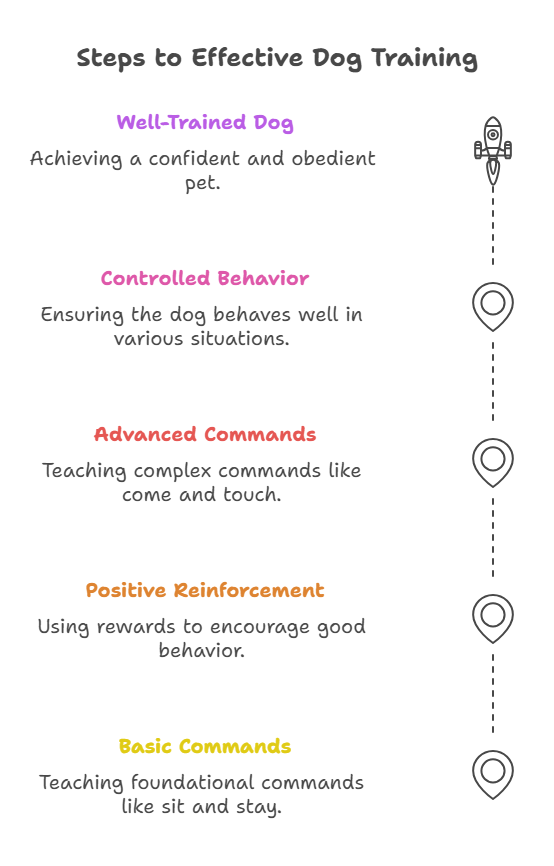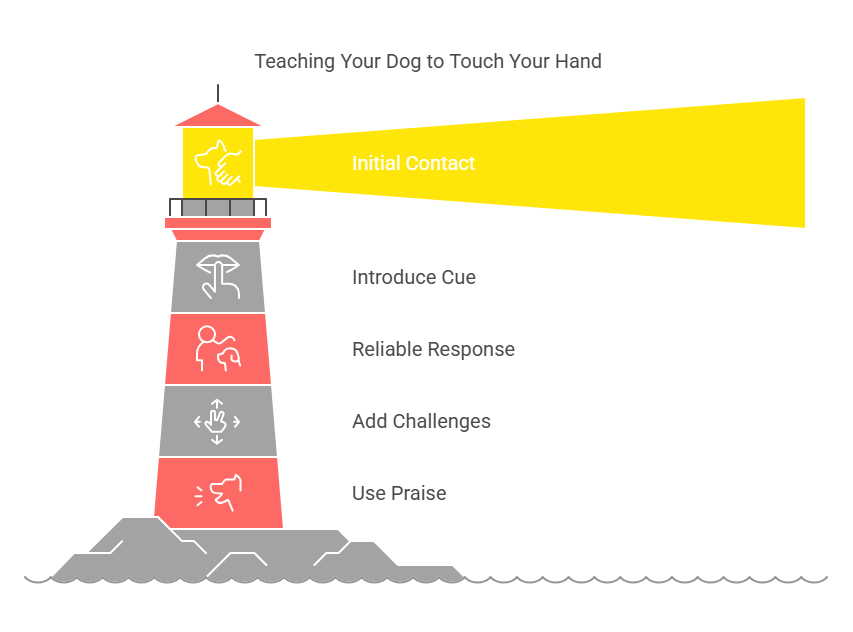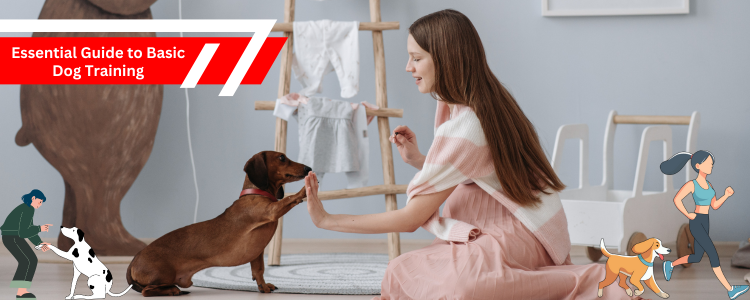Training your dog is essential. It builds trust and creates a bond. Whether you have a new puppy or an older dog, learning basic commands is a must. Training ensures your dog’s safety and makes life easier for both of you. Below are key tips and steps to begin basic dog training.
According to American Veterinary Medical Association
“95% of dog owners believe training improves their pet’s behavior.”
Follow these to create a well-behaved companion.
What is Dog Training?
Dog training is teaching your pet to behave well. It includes commands, good habits, and manners. Training also helps your dog understand what is acceptable behavior. A trained dog is confident, obedient, and happier. According to the American Kennel Club (AKC), consistent training improves your dog’s mental and physical health.
Statistics show that 56% of dog owners in the U.S. take part in some form of training. (Source: APPA) It highlights the importance of structured lessons. Simple daily practice works best.

Positive Reinforcement is Key
Positive reinforcement means rewarding good behavior. It is one of the most effective training methods. Dogs respond better to praise, treats, or toys. Avoid punishment. Harsh methods can confuse and scare your dog.
The Humane Society says rewards create trust and boost your dog’s willingness to learn. Start with small treats or a pat on the head. Keep rewards immediate. For example, if your dog sits, give the treat right away. This helps them connect the action with the reward.
Teach Your Dog to Stay
Teaching “stay” helps control your dog’s movements. Use this command to keep them safe in busy areas.
- Start in a quiet space. Tell your dog to “sit.”
- Raise your palm and say “stay.”
- Take a small step back.
- If your dog stays, reward them immediately.
- Gradually increase the distance over time.
Practice often. Keep sessions short to avoid boredom.
Teach Your Dog to Come When They Hear Their Name
One of the fundamentals in dog training is teaching the dog to come when they hear their name. This may be tricky for some pups who are still getting used to their new home and family, but it’s a critical step in the process.
First, let your dog get comfortable at home and make sure they get plenty of exercise. They’ll be more likely to pay attention and learn if they’re feeling confident and unstressed.
Next, find a location that’s quiet and away from distractions like the TV, people, or other animals. When you call your pup’s name, make sure you’re calm and use a neutral tone of voice. If your pup doesn’t come after one call, walk towards them while continuing to say their name in a happy tone of voice. When they finally come over to you, praise them with gentle petting and give them treats as a reward for obeying your commands!
Coming when called is a lifesaving command. Use it during walks or emergencies.
- Say your dog’s name clearly.
- Add the word “come.”
- Reward your dog when they respond.
Start in a quiet area. Gradually practice in spaces with more distractions. Always use a happy tone. This makes the command inviting.
Teach Your Dog Not to Jump on People or Chew on Things
Teaching your dog not to jump on people or chew on things is a great place to start. Teaching this basic concept will help your dog with the most common problems, and it’ll make your home more pleasant for you and your guests.
To teach your dog not to jump on people, hold her collar when she jumps up and say “No!” in a firm voice. You can also ask them to sit before greeting them or giving them food. To teach them not to chew on things, be consistent and keep items they’re not allowed to chew out of their reach.
If you catch your pup jumping up or chewing something, don’t scream or yell at them; scolding them can make matters worse by making them scared of you. Calmly remove whatever they’re trying to gnaw on and replace it with an appropriate item like a toy or bone they’re allowed to chew on.
Teach Your Dog to Sit
“Sit” is one of the easiest commands. It is the foundation for other skills.
- Hold a treat close to your dog’s nose.
- Move your hand up, causing your dog’s head to follow.
- As their bottom touches the ground, say “sit.”
- Reward them immediately.
Repeat daily. Use this command during mealtime or walks.
Teach Your Dog Loose Leash Walking
Loose leash walking makes walks enjoyable. It stops pulling and keeps your dog focused.
- Hold the leash firmly but give some slack.
- Stop walking if your dog pulls.
- Wait until the leash loosens, then continue.
- Praise your dog for staying beside you.
Practice in low-distraction areas. Use a harness for better control.
Teach Your Dog to Touch Your Hand
Teaching your dog to touch your hand is simple and builds trust. It also helps in managing their focus in various situations.

- Sit on the floor or kneel to be at your dog’s level. Stretch out your hand near their nose but don’t touch them.
- Wait for your dog to investigate your hand. Once they sniff or touch it with their nose, say “touch” and immediately give them a treat.
- Repeat this step several times. As they start to understand, introduce the cue “touch” before they make contact with your hand.
- Once your dog reliably touches your hand, you can add challenges like moving your hand to different positions. Gradually phase out treats and use verbal praise instead.
This command can be used in many scenarios, like redirecting attention or calming your dog in stressful moments.
FAQ About Basic Dog Training
1. How long does it take to train a dog?
Training depends on your dog’s age and personality. Most basic commands take 2-4 weeks with daily practice. Consistency speeds up the process.
2. What if my dog doesn’t respond to commands?
Be patient. Use more enticing rewards and practice in a quiet space. Seek help from a professional if needed.
3. Are some breeds easier to train?
Yes, some breeds are more eager to please. However, any dog can learn with consistent effort.
4. What is the best age to start training?
Start as early as 8 weeks old. Older dogs can learn too, but it may take more time.
5. Do I need professional help for dog training?
Not always. Basic commands are easy to teach at home. Hire a trainer for advanced skills or behavior issues.

